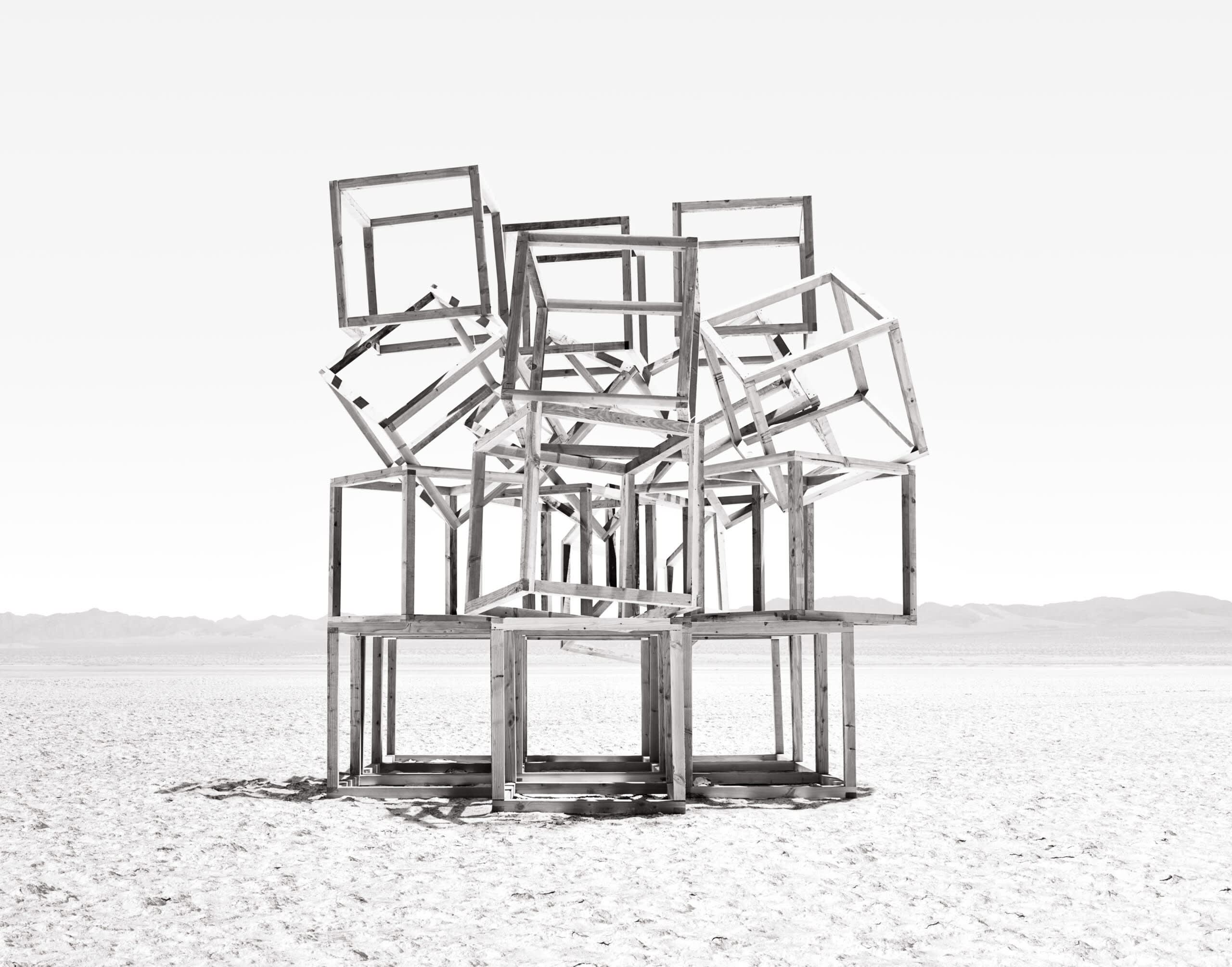21 June 2019 It can be difficult to admit the idea of landscape as fictional artifice, as if it were a contradiction of our own internal experience. But the fascinating work of French artist Noémie Goudal (b. 1984) subtly compels such a realization through infinitely complex structures and her evolving theoretical approach. Her labyrinthine installation on the museum’s ground floor invites the public to stroll among a selection of her recent photographs.

Noémie Goudal, Telluris I, 2017, inkjet print, 160 x 203 cm.
Goudal was born in France but studied art in London, where she still lives, and her work draws much of its inspiration from the history of science. After exploring our ever-changing relationship to the sky, her three past series have focused on our equally inconstant comprehension of the Earth’s origins, or what was not called “geology” yet, at a time when humans believed mountains to be eternally static. Her Soulèvements [Uprisings] and Démantèlements [Dismantlings] series remind us, however, that the craggy face of the Earth is always changing. The Telluris series is an expression of humanity’s obsession with understanding our surroundings, as if taming the land with equations could make our existence less fragile. Goudal seeks to make the viewer an active participant, not only through the immersive settings she devises to display her work, but also through her unique style: her photographs are most often shot in large format and lack any spatiotemporal markers, with a layering effect. On first glance, they seem to evoke American landscape photography. But the artist has left a careful trail of clues that quickly make it apparent that their purpose is not documentary.
The exhibition was made in collaboration with Les Filles du Calvaire gallery in Paris. An interview with the artist by Joël Vacheron appears in the MBAL’s “Could you talk about…” booklet series.

